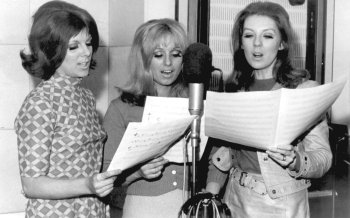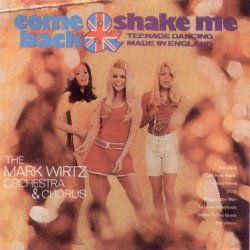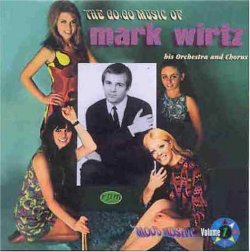
I first met and worked with THE BREAKAWAYS - at Big Jim Sullivan and Vic Flick's recommendation - during my Colinio Productions days in 1964/5. Long before Madeline Bell's Dusty Springfield-championed soul-group took over to rule British R&B sessions, the Breakaways were the undisputed soul-tinged/funky background princesses on the London studio scene.
Their voices as mesmerizingly attractive and s-s-sexy as their appearance, always bubbly, friendly, helpful, they distinguished themselves as the ultimate, consummate, professionals. Highly respected by virtually all producers, arrangers, engineers, artists and fellow musicians alike, they were perhaps most notably appreciated for their on-the-spot talent of creatively improvising their parts to give countless hit records their distinctive sound.
When I began to focus on emulating the lily-white, silky, sultry, sound of US backing singers, it was in fact Jean who not only recommended bringing in Maggie Stredder and her Ladybirds to augment my two, juxtaposed, featured, group-singers in my "Mood Mosaic" concept, but in fact surrendered the featured lead voices to Maggie and her girls as more appropriate for the project. Thus, the Breakaways demonstrated yet another one of their many attributes: While they were naturally competitive with other back-up groups to make a living, they never engaged in London's studio-typical rivalry, even chicanery, which was so prevalently at large among musicians and singers during the '60s, but, to the contrary, were generously cooperative comrades when working with singers from other groups.
To distinguish the Breakaways in a studio-professional sense, one of the outstanding abilities they offered to producers and engineers, was their amazing skill in working a microphone. Not only were they expert in their positioning, coming into and leaning back from the mic depending on the required dynamics, but their internal balance was always perfectly blended. That meant that, rather than the engineer having to typically use several mics to contrive a proper blend and balance in the control room, forced to ride the faders for crescendos or decrescendos, only one mic was required to record the Breakaways, and the fader had to virtually not be touched.
That, for someone like me, who recorded live, was nothing less than a
sheer blessing. We need to remember that there were only a limited number
of line and mic inputs on consoles back then, each one at a premium when
recording orchestras live, to fully appreciate the Breakaways' modest
need for only one mic and their consumption of only one, instead of three
or more, channels. The engineer and I were hence able to focus on other
things rather than being preoccupied with the constant monitoring and
adjustment of the back-up group's levels. Most of all, though, the internally
blended, one mic-recorded, performance added to the natural, uncontrived,
exciting ambience, which the Breakaways were such masters at generating.
 |
Their tireless, disciplined, consistency was another attribute that made working with the Breakaways a stress-less pleasure: Be it take one, or take twenty, the Breakaways sounded dead on target, without even a hint of fatigue, loss of energy, or focus. By the same token, their attitude always remained positive and - untypically for often prima donna complexed session singers - not once, in hundreds of hours of working with them, did I ever hear any of them bitch, or complain, even when under duress, or in the face of adversity.
Another forte that the Breakaways had over other pop/rock vocal backup groups, excluding the Ladybirds, was their ability to sight-read written music parts. Even though Madeline Bell and her troupe could blow away anybody else in London when it came to deep soul vocals, they were unable to read, and would therefore consume either a lot of expensive studio time to learn the parts, or were dependent on only improvised and somewhat formula-sourced arrangements to perform.
It was shortly after I started my tenure at EMI and Abbey Road Studios, when I shifted my preference from back-up girl groups to male singers, appointing John Carter and his crew as my resident back-up team. And so, for a couple of years, the Breakaways, as well as the Ladybirds, and I drifted apart. Almost poetically, though, it was during the last session together - a "Teenage Opera" recording, in fact - when the Breakaways demonstrated yet another one of their rare qualities, their loyalty and protective friendship.
It was on one of my typically chaotic sessions, musicians and singers
having to endure difficult parts and a lot of takes before I was happy,
when a certain, at the time drunk, trumpet player started to vociferously
bitch and complain, threatening to walk out and bust the session. The
ambience was tense and a threat of anarchy hung in the air. I need to
explain here that, while I was creatively very domineering and demanding
back then, I was not very aggressive on a personal level, and the situation
scared me. Frankly, I was at a loss. It was at the height of suspense
- you could have heard a pin drop in the hostile silence - when Margo's
voice yelled out from the vocal booth, "Oh, shut up and play your
******* part, you Scottish ****!" At once, she was joined by Big
Jim Sullivan coming to her (and my) support, by adding, "Yeah, or
I'll shove that horn right up your arse, and you can fart your part for
rest of the session!" After a dead-silent pause, everybody cracked
up laughing and howling and cheering. The player did shut up and played
his part beautifully, without any further protest or disruption. At that
critical moment, there was no doubt in my mind that I wanted to marry
Margo.
 |
|
The Breakaways and I had a reunion a couple of years later when we worked together on my "Come Back And Shake Me" album (on which Margo sang a goose-bump arousing solo rendition of "I Can Hear Music"), as well as on Samantha Jones '"A Girl Named Sam" album, Kris Ife's "Lion Judd" LP, and the Pat & Penny project, on which Margo and Jean ghost-sang the fictitious duo's lead parts.
Though I wasn't conscious of it yet, my remaining days in the UK were
counted and ticking away, and it was on those reunion sessions that I
saw the Breakaways for the very last time. A year later I was on the plane
to California to go into exile, with eleven hours flight time on my hands
to reflect on my life in England, which had become my beloved home. With
all the images and recalls that whirled through my mind, of friends and
associates and close musician friends and co-workers, the Breakaways featured
significantly. They, too, had become a part of my family, and I of theirs.
In tribute to those luvverly, brilliantly talented, vibrantly alive,
and ever-cheerful girls, I say, thank you. Thank you for unforgettable
memories, performances, and for contributing so generously to shaping
my career.
 |
"THE GO-GO MUSIC OF MARK WIRTZ" CD (incorporating
the "Come Back And Shake Me" LP):
http://tinyurl.com/eqfm9
THE BREAKAWAYS & FRIENDS "THAT'S HOW IT
GOES - THE PYE ANTHOLOGY" CD:
http://www.tinyurl.com/543wp
THE BREAKAWAYS STORY by Ian Chapman and Mick Patrick:
http://www.spectropop.com/Breakaways/index.htm
MARK WIRTZ:
http://www.markwirtz.com
PRESENTED BY THE SPECTROPOP TEAM